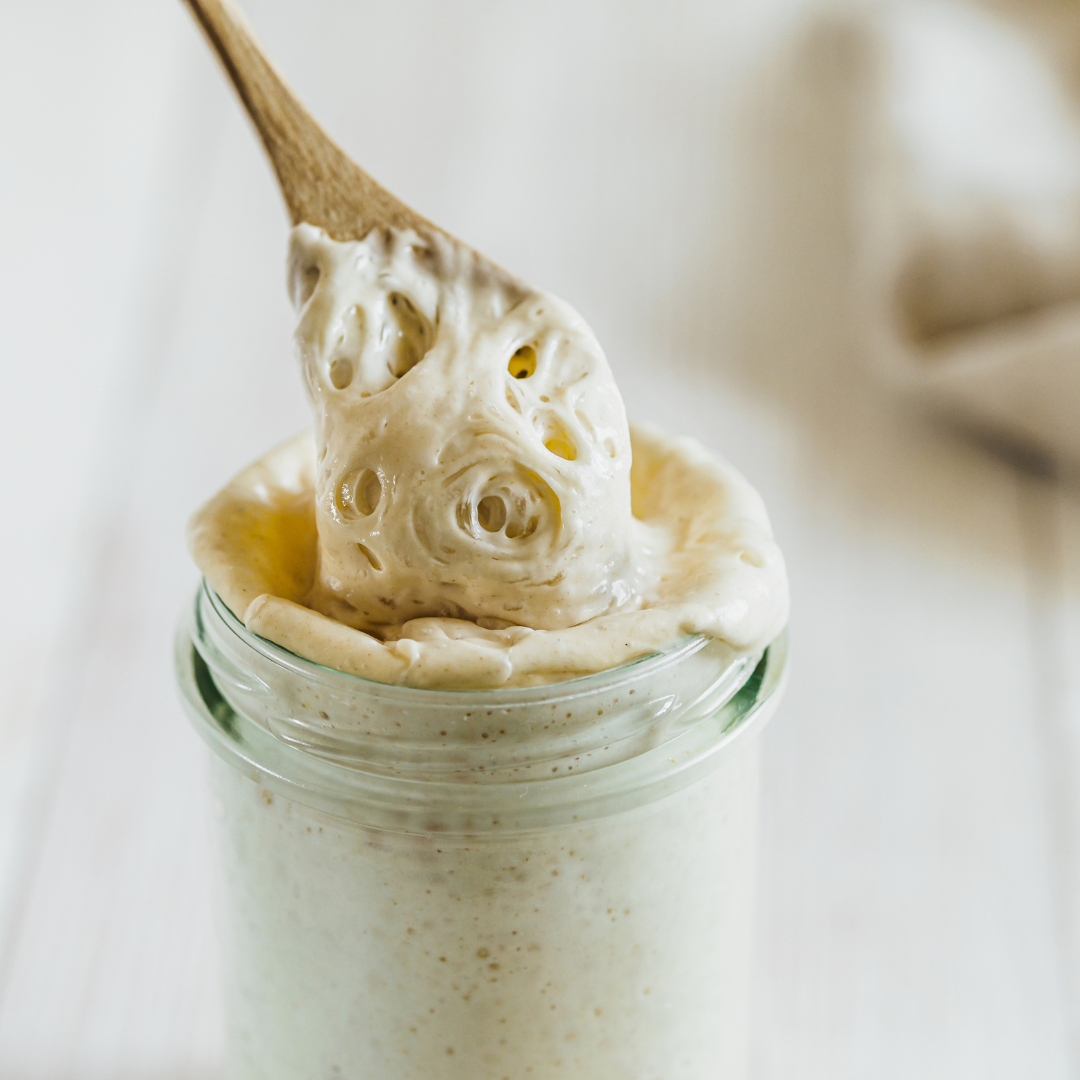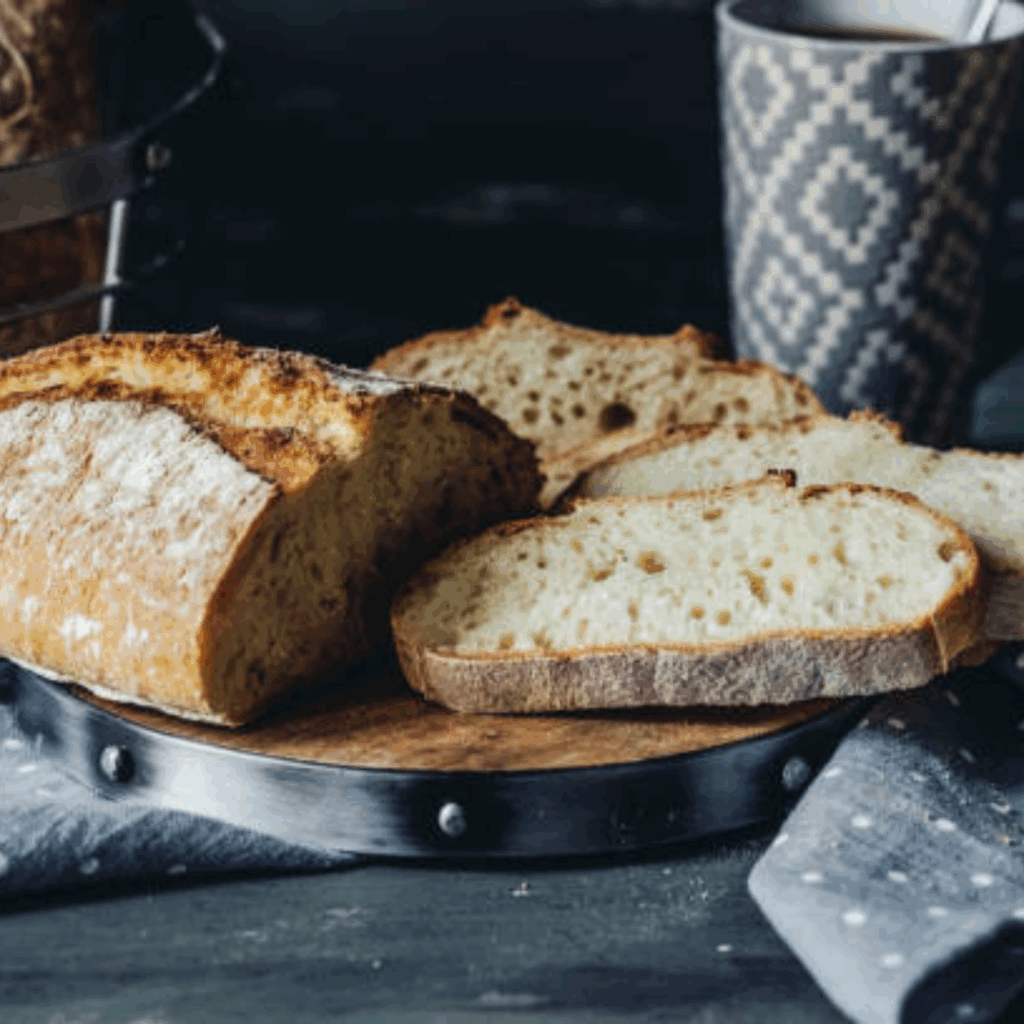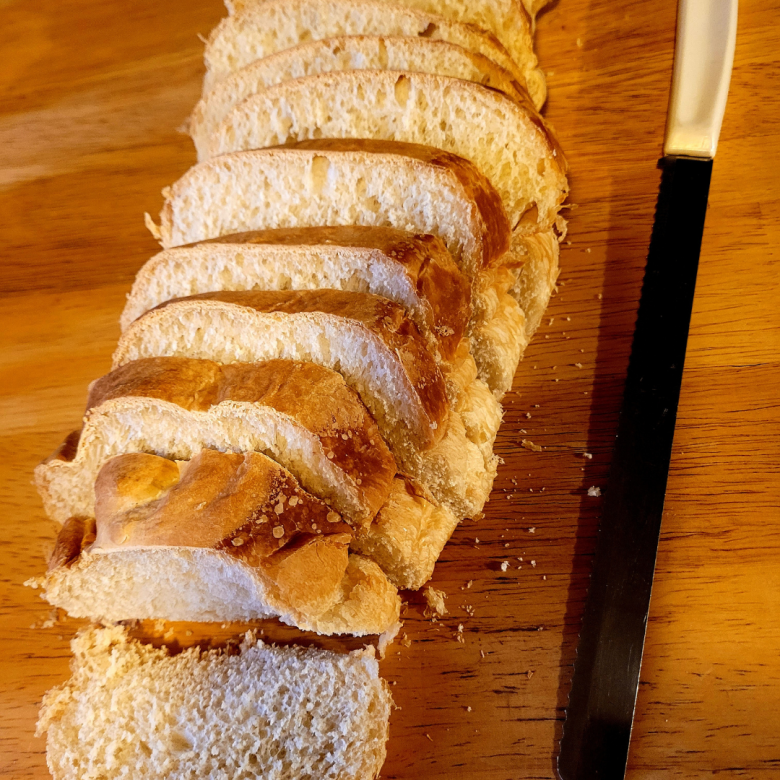Learn how to create a perfectly tangy wild recipe sourdough starter with this ultimate guide. Whether you’re a beginner or a seasoned baker, this step-by-step tutorial will help you cultivate a healthy, active starter that delivers rich flavor and a beautiful rise in every loaf. Discover tips, tricks, and troubleshooting advice to master your sourdough baking at home.
There’s nothing quite like the flavor and texture of bread made from a wild sourdough starter—but getting it just right can feel intimidating. In this ultimate guide, I’ll walk you through the entire process of crafting a tangy, bubbly starter from scratch. From selecting the right flour and water to nurturing your starter daily, you’ll gain the confidence and knowledge to create a foundation for delicious, homemade sourdough bread every time!
This is a pinnable post. Tap or hover over any image in this post to pin to your Pinterest Boards.
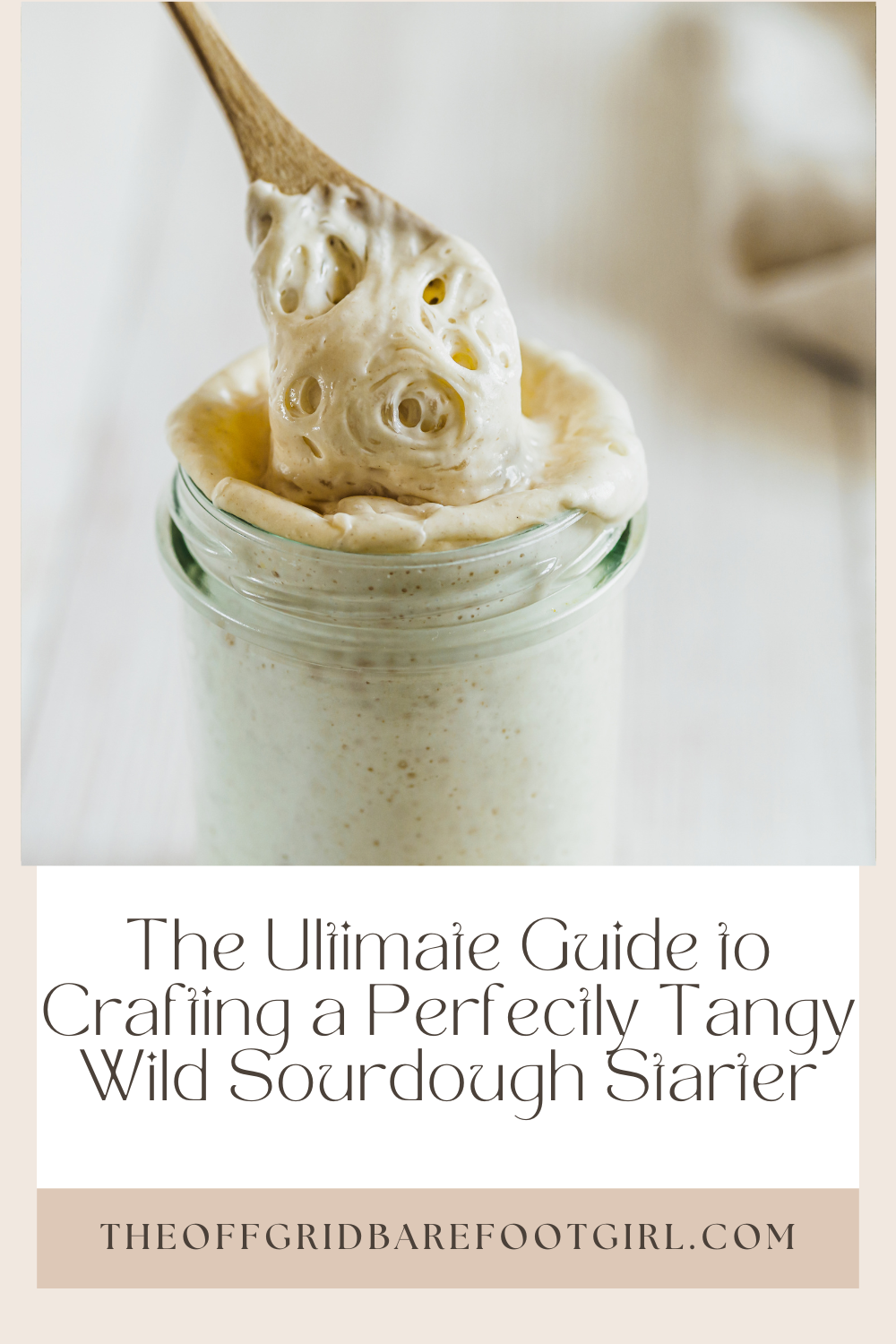
Introduction to Wild Sourdough Starter
What is a Wild Sourdough Starter?
A wild sourdough starter is a naturally leavened dough made from a mixture of flour and water that ferments with naturally occurring wild yeast and beneficial bacteria. It is used as a leavening agent in bread baking and gives sourdough its distinct flavor and texture.
A wild sourdough starter is a natural leavening agent made from a mixture of water and flour that captures wild yeast and bacteria from the environment. It acts as the life force behind sourdough bread, giving it its distinct tangy flavor and chewy texture. Unlike commercial yeast, which is a single strain of lab-grown yeast, wild starters contain a variety of yeasts and lactobacilli, creating complex flavors and aromas.
To make a wild sourdough starter, one must create an environment in which these microorganisms can thrive by feeding them with fresh flour and water regularly. Over time, the starter matures, becoming more robust with each feeding. It develops its own unique characteristics influenced by factors like temperature, humidity, and the specific flora in its surroundings. A well-maintained starter can last for years or even decades, creating endless opportunities for baking delicious homemade sourdough bread or other fermented treats.
The Benefits of Using Wild Yeast
Using wild yeast in your sourdough starter adds depth and complexity to your bread. Unlike commercial yeast, wild yeast develops slowly over time, resulting in a more nuanced and tangy flavor. It also contributes to a longer shelf life, improved digestibility, and potentially increased nutrient availability in the bread.
Using wild yeast in baking has numerous benefits that can elevate your homemade creations to new heights. Unlike commercial yeasts, which are selected for their specific properties and flavors, wild yeast is a natural fermentation agent found in the environment. One of the main advantages of wild yeast is its unique flavor profile. It imparts a complex and diverse range of flavors that cannot be replicated by commercial yeasts, resulting in breads and pastries with a distinct taste and aroma.
Wild yeast enhances the nutritional value of your baked goods as it breaks down nutrients and increases their bioavailability during the fermentation process. This makes your bread more easily digestible and enriches it with beneficial bacteria. In addition to the enhanced taste and nutrition, using wild yeast also contributes to eco-friendliness by reducing dependence on commercially produced yeasts that come with packaging waste. So, next time you bake, consider harnessing the power of wild yeast to take your homemade goods from ordinary to extraordinary!
Why a Tangy Flavor is Desirable in Sourdough
The tangy flavor in sourdough comes from the lactic and acetic acid produced during fermentation by the wild yeast and lactobacilli. This distinct tanginess adds a delightful depth of flavor to the bread, making it a favorite among bread enthusiasts. It balances well with other ingredients and can elevate the taste of any sandwich or toast.
Understanding the Basics of Sourdough Fermentation
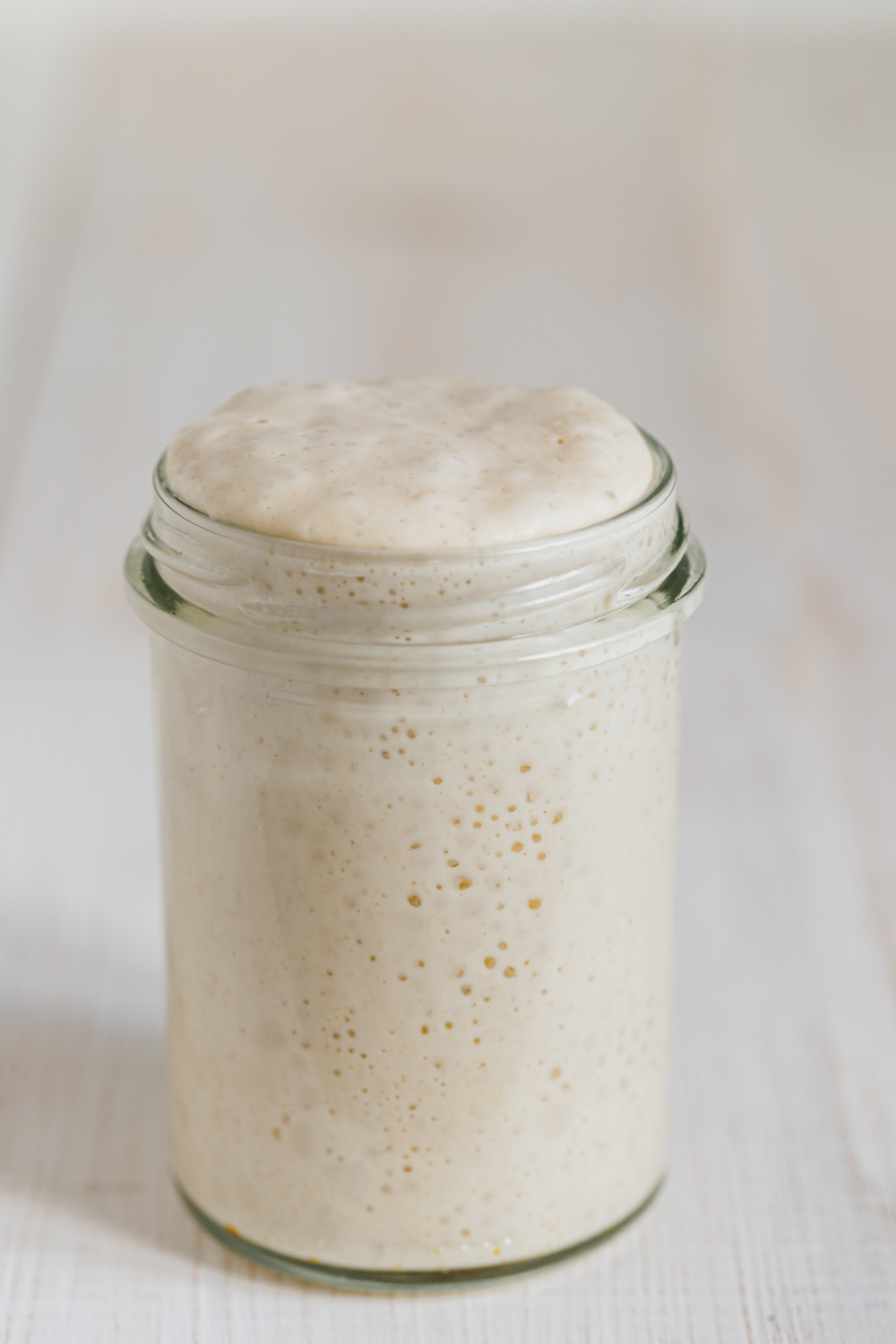
The Science Behind Sourdough Fermentation
Sourdough fermentation is a natural process that occurs when the wild yeast and lactobacilli feed on the carbohydrates in the flour. As they consume the sugars, they produce carbon dioxide gas, which gives the bread its airy texture. This gas gets trapped in gluten strands, causing the dough to rise and giving sourdough its unique texture.
Additionally, the byproducts of fermentation, such as lactic and acetic acid, contribute to the unique tanginess of sourdough. Meanwhile, these lactic acid bacteria produce lactic acid, giving sourdough that tangy flavor profile we all love.
The longer fermentation time allows for better flavor development, as well as enhancing the bioavailability of nutrients and breaking down potentially troublesome compounds in wheat that can cause digestive issues. So when you’re enjoying a slice of freshly baked sourdough bread with its airy crumb and mouthwatering taste, remember it’s all thanks to this remarkable scientific dance between yeast and bacteria!
The Role of Wild Yeast and Lactobacilli in Fermentation
Wild yeast is responsible for the leavening action in sourdough. It ferments the dough, producing carbon dioxide gas, which creates air pockets in the bread. Lactobacilli, a type of beneficial bacteria, produce lactic and acetic acid, giving sourdough its tangy flavor. The balance between yeast and lactobacilli is crucial for a successful fermentation process.
Wild yeast, also known as natural yeast or sourdough starter, is naturally present in the environment and can be captured from the air or found on the surface of fruits and vegetables. It breaks down carbohydrates in the dough and ferments them into alcohol and carbon dioxide, resulting in airy breads or bubbling brews. Lactobacilli are bacteria that thrive in an acidic environment created by wild yeast.
They convert sugars into lactic acid, which imparts tanginess and acts as a natural preservative. Together, wild yeast and lactobacilli create a symbiotic relationship during fermentation, enhancing flavors, increasing nutritional value, reducing phytic acid levels in grains for better digestion, and contributing to our overall well-being. So next time you bite into that sourdough loaf or take a sip of craft beer, remember to thank these microorganisms for their marvelous work!
Selecting the Right Ingredients for a Tangy Wild Sourdough Starter
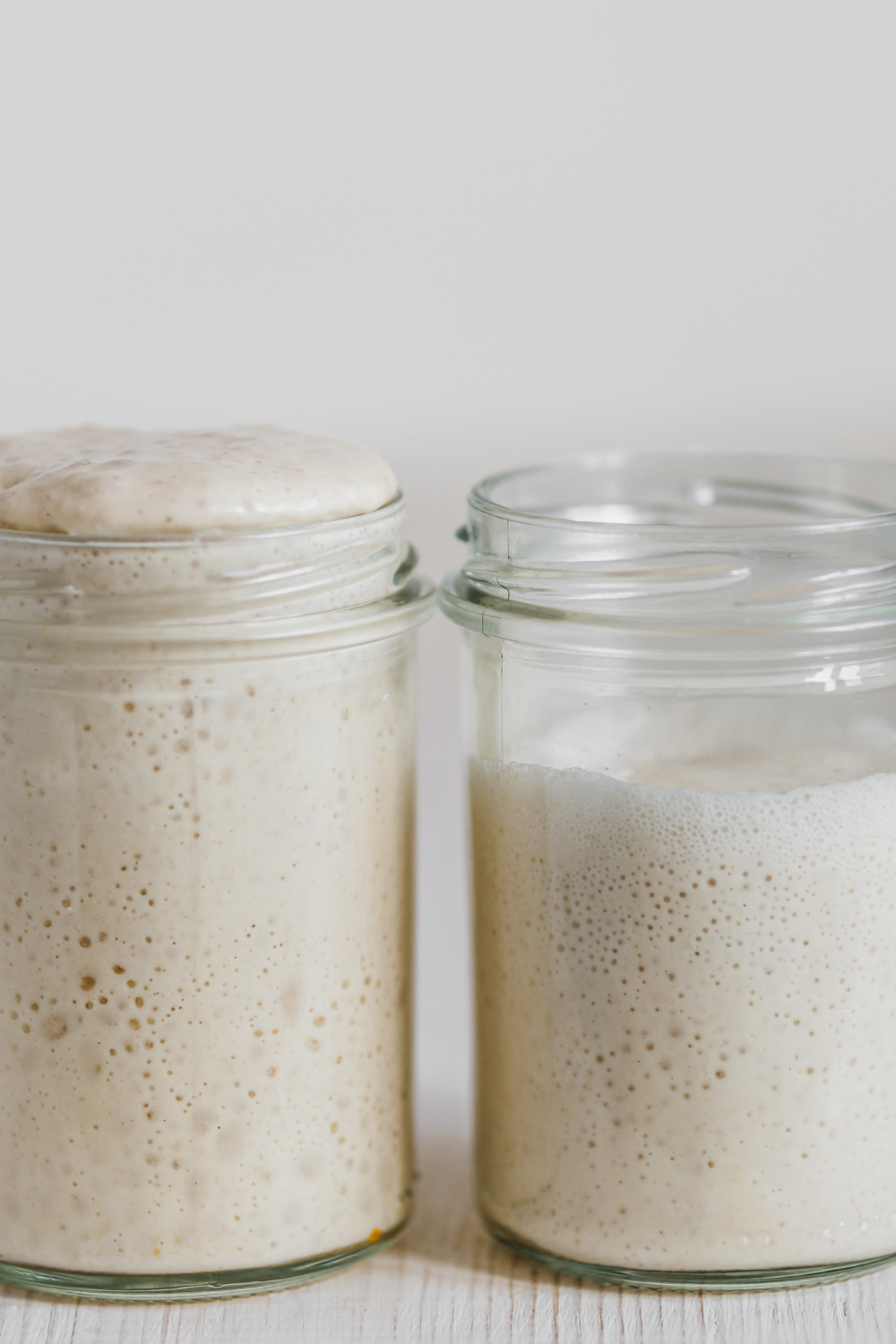
Choosing the Right Flour for Your Starter
When selecting flour for your sourdough starter, opt for unbleached, high-quality flour. Whole wheat or rye flour can also add depth to the flavor profile. These flours contain natural microbes that can help kickstart fermentation. Avoid using bleached or self-rising flours, as they may contain additives that can hinder fermentation. However, I have never personally experienced any hindrances in the fermentation process of crafting my own wild sourdough starter by using bleached all-purpose flour.
The Importance of Water Quality
Water plays a significant role in the health of your sourdough starter. Use filtered or bottled water, as chlorine and other chemicals in tap water can inhibit fermentation. The ideal water temperature for feeding your starter is around 75°F (24°C), as this encourages the growth of beneficial microbes.
Exploring Additional Flavor-Enhancing Ingredients
While flour and water are the basic building blocks of a sourdough starter, you can experiment with additional ingredients to enhance the flavor. Some popular options include adding a small amount of whole grains, honey, or even fruit juice. These additions can contribute to the overall complexity and taste of your sourdough.
Step-by-Step Guide to Creating and Maintaining a Sourdough Starter
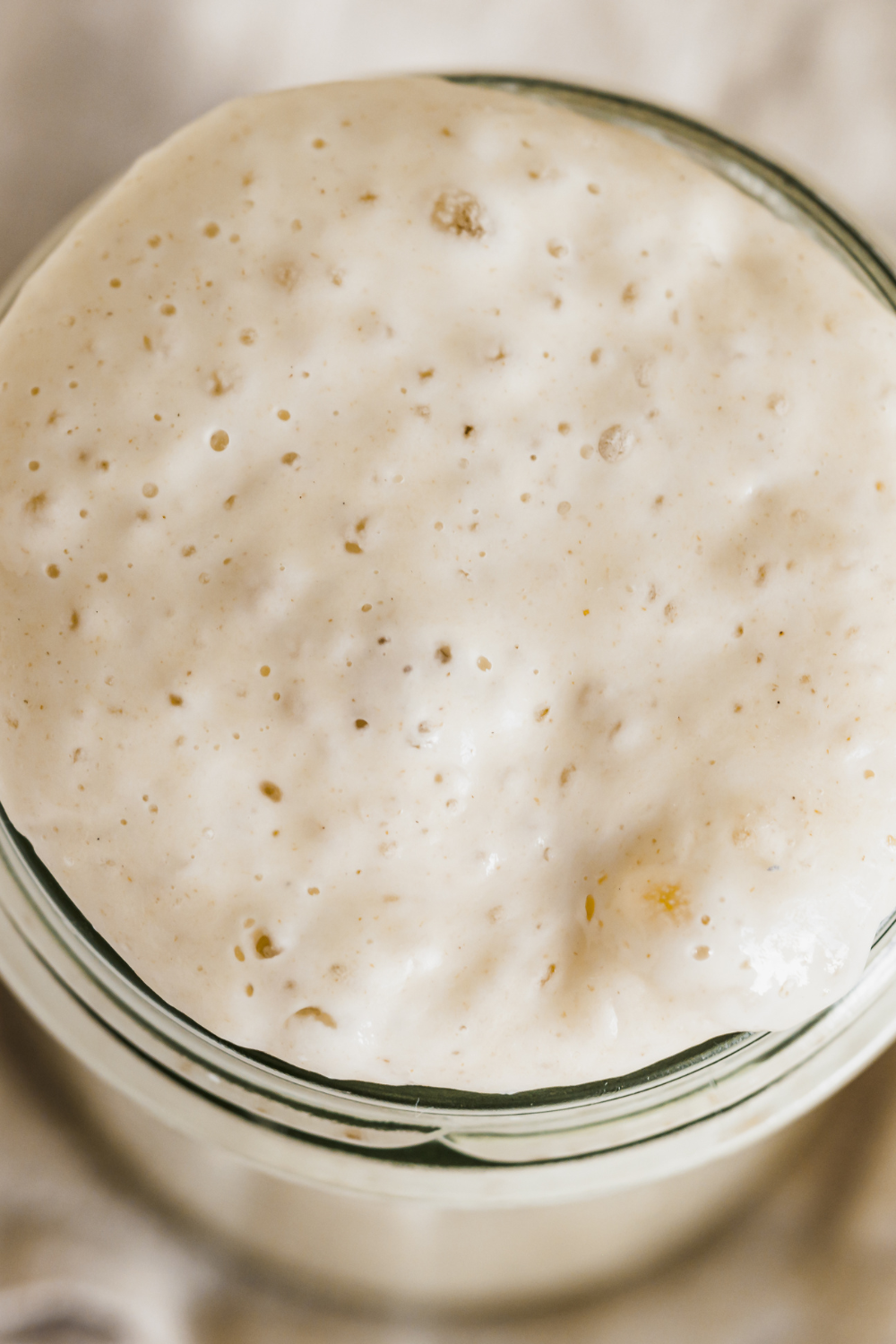
Building the Initial Starter
To create a wild sourdough starter, combine equal parts of flour and water in a clean container. Mix well until no dry flour remains. Cover loosely and let it sit at room temperature for 24 hours. After 24 hours, discard half of the mixture, and feed it with equal parts flour and water. Repeat this process daily for about a week until your starter becomes active and bubbly. Do this for a total of seven days in a row consistently.
Feeding and Maintaining Your Starter
Once your starter is active, it needs regular feeding to stay healthy. Each day, discard about half of the starter and feed it with fresh flour and water in equal amounts. Maintain a consistent feeding schedule, preferably every 12 hours. Adjust the quantity of your starter based on your baking needs, ensuring that you always have enough to both bake with and maintain.
Your starter is like a pet; it needs regular care and nourishment to thrive. Start by storing it in a glass jar with a loose lid, allowing it to “breathe” while preventing contamination. When it’s time to feed, discard half of your starter and add equal parts flour and water by weight, mixing until well combined. Keep in mind that the type of flour you use will affect the flavor profile of your bread, so feel free to experiment with different varieties. Feed your starter daily or every 12 hours if you want that extra tangy flavor.
As for maintenance, be observant of any unusual odors or discoloration, which could indicate unwanted bacterial growth. Regularly give your starter a good stir to distribute the yeast and prevent separation. Remember, creating delicious sourdough bread starts with a happy and healthy starter!
Starter Activity and Signs of Readiness
A healthy, active sourdough starter should rise and fall predictably. It should double in size within a few hours after feeding and have a bubbly and frothy appearance. It should also possess a pleasant sour aroma. These signs indicate that your sourdough starter is ready to be used in bread recipes or stored in the refrigerator for longer periods.

Troubleshooting Common Issues in Sourdough Starter Development
Dealing with Slow or Inactive Starters
Is your sourdough starter taking its sweet time to wake up? Don’t worry, even the best of us have encountered this sluggishness. A slow or inactive starter can be a result of factors like low room temperature or inadequate feeding. To give it a jumpstart, try placing your starter in a warmer spot or adjusting your feeding schedule to be more frequent. And hey, maybe your starter is just on a sourdough siesta – keep feeding it, and it’ll come alive eventually!
Addressing Mold or Other Contaminations
Uh-oh, has your once-promising sourdough starter turned into a science experiment gone wrong? Mold and other contaminations can be a real buzzkill, but fear not! If you spot any suspicious growth, it’s time for some tough love. Discard the contaminated portion of the starter and start fresh with a clean container and utensils. Make sure to maintain good hygiene practices, like washing your hands and using filtered water. Remember, a little cleanliness goes a long way in the wild world of sourdough.
Adjusting Starter Hydration and Consistency
Is your sourdough starter more like a thick batter or a runny soup? The hydration and consistency of your starter play a crucial role in its development. If it’s too thick and sluggish, add a splash of water during feeding to give it a lighter texture. On the other hand, if it’s too runny and unpredictable, add a bit more flour to stiffen it up. It’s all about finding that perfect balance – not too wet, not too dry – just perfect for your sourdough baking.
Enhancing the Tanginess: Tips and Techniques for Flavor Development
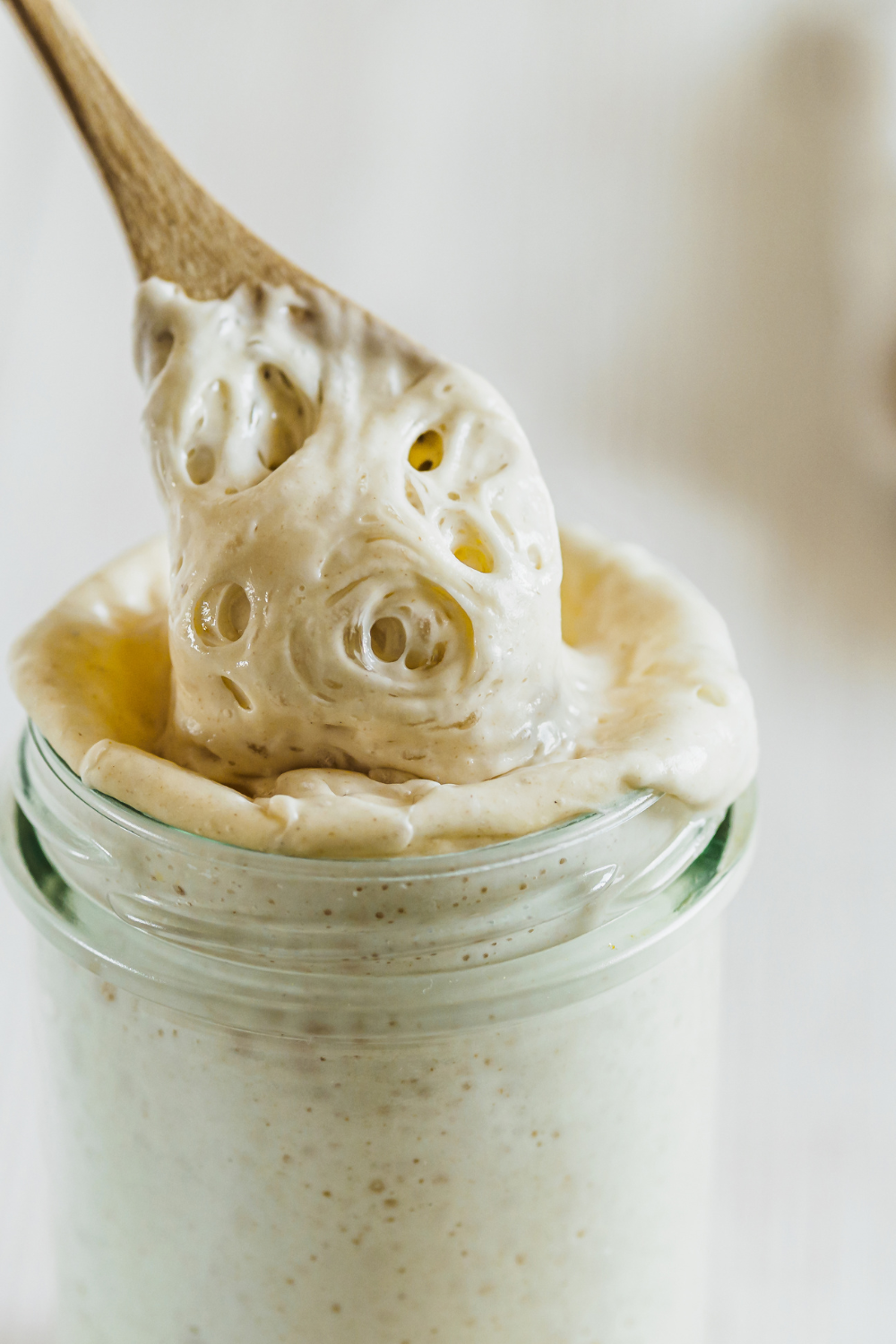
Exploring Longer Fermentation Times
Patience is a virtue, especially when it comes to sourdough flavor development. If you’re craving more tanginess, try extending the fermentation time of your dough. Letting it rest in the fridge overnight or even up to 48 hours can work wonders for that extra zing. Trust us, the taste will be well worth the wait – tangy, tantalizing, and totally terrific!
Using Different Feeding Ratios
Feeding your sourdough starter doesn’t have to be a one-size-fits-all affair. Experiment with different feeding ratios to unlock a universe of flavors. Increasing the amount of flour in your feedings can create a milder, less tangy taste while reducing the flour and increasing the water can intensify the tanginess. It’s all about finding that magical formula that makes your taste buds dance with joy.
Incorporating Retardation Methods
Don’t be alarmed; retardation is a good thing in the world of sourdough. Retardation refers to slowing down the fermentation process, allowing the flavors to develop more fully. By retarding your sourdough at a cooler temperature, such as in the fridge, you can achieve a deeper, more complex tanginess.
Incorporating Wild Sourdough Starter into Bread and Other Baked Goods
Using Sourdough Starter in Bread Recipes
Now that you’ve mastered the art of sourdough starter, it’s time to put it to work in some delicious bread recipes. Whether you prefer a classic crusty loaf or a soft and chewy sandwich bread, your wild starter will add a unique and tangy flavor to every bite. Just remember to adjust your recipe slightly to account for the sourdough’s natural leavening power. Breadmaking has never been so wild!
Creating Tangy Pastries and Pancakes
Who says sourdough is only for bread? Expand your sourdough horizons by incorporating it into pastries and pancakes. The tanginess will add an exciting twist to your favorite baked goods. Picture yourself enjoying tangy sourdough cinnamon rolls or fluffy sourdough pancakes dripping with syrup – it’s a taste sensation you won’t want to miss. Your breakfast table will never be the same again!
Experimenting with Sourdough in Non-Traditional Recipes
Ready to take your sourdough game to the next level? Get creative and experiment with sourdough in non-traditional recipes. From tangy sourdough pizza crusts to sourdough pretzels with a twist, there are endless possibilities. Don’t be afraid to think outside the breadbox and let your wild sourdough starter add its unique flavor to unexpected culinary delights. Your taste buds will thank you for the adventure.
Expert Tips for Successful Sourdough Starter
How to Store and Maintain a Sourdough Starter
Storing and maintaining a sourdough starter is like having a little pet that requires love and care. Keep your starter in a lidded jar or container in the refrigerator, feeding it regularly to keep it happy and active. If you’re going on vacation or need a break from baking, you can also store your starter in the freezer. Just make sure to thaw it gradually before waking it up with some delicious flour and water.
What to Do with Excess Starter
Do you have an overflowing surplus of sourdough starter on your hands? Don’t fret – there are plenty of creative ways to put that tangy goodness to use. You can whip up tangy sourdough pancakes, waffles, or muffins, or even use it as a flavorful addition to your pizza dough. The possibilities are endless, and believe me, your friends and family will thank you for sharing the sourdough love.
Expert Tips for Achieving a Consistently Tangy Flavor
Looking to become the ultimate sourdough connoisseur? Here are some expert tips to help you achieve that consistently tangy flavor:
- Experiment with Different Flours: Different flours bring different flavors. Add rye, whole wheat, or spelt flour to your sourdough adventures for a unique twist.
- Maintain a Consistent Feeding Schedule: Keeping your starter well-fed and on a regular feeding schedule ensures a healthier, more robust sourdough ecosystem. Consistency is key, my friend.
- Don’t Rush the Fermentation: Give your sourdough enough time to ferment and develop those deep, tangy flavors. Trust the process, and the tanginess will come.
- Embrace the Wild Side: Wild yeast is what gives sourdough its special tanginess. Embrace the untamed nature of your starter and let the wild yeast work its magic.
Now go forth, sourdough enthusiast, and let your tangy wild starter take you on a flavor-packed journey. It’s time to embrace the deliciously unpredictable world of sourdough.
Conclusion
Congratulations! You have now mastered the art of crafting a perfectly tangy wild sourdough starter. By understanding the basics of sourdough fermentation, selecting the right ingredients, and following our step-by-step guide, you have laid the foundation for creating exceptional sourdough bread and baked goods. Remember, practice and experimentation are essential to refining your skills and developing your unique flavor profiles. So, don’t be afraid to explore different techniques, embrace the tanginess, and continue to nourish your sourdough starter with love and attention. Enjoy the journey of sourdough baking and savor the delicious results!
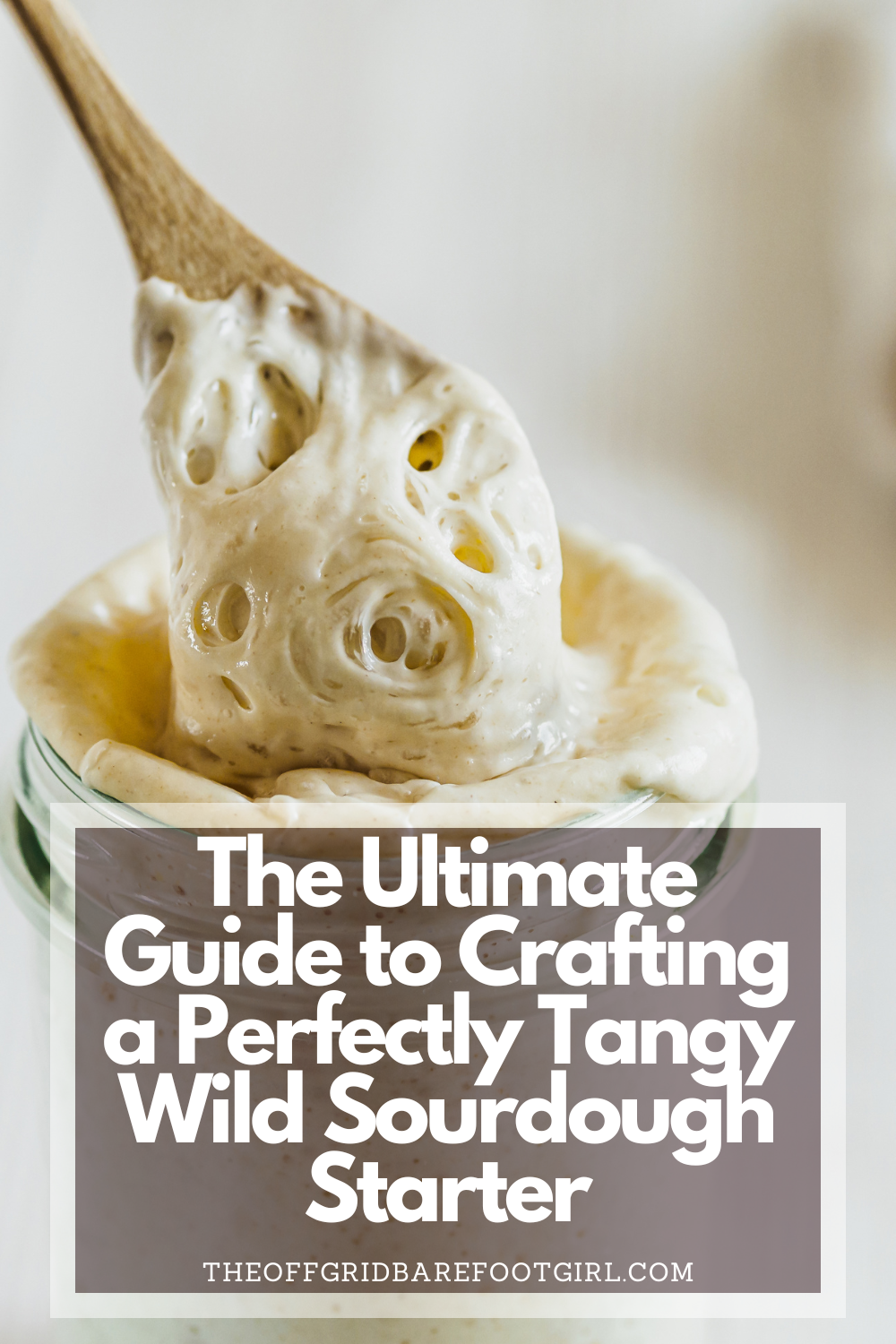
Frequently Asked Questions
1. How often should I feed my sourdough starter?
It is generally recommended to feed your sourdough starter once a day, especially if it is kept at room temperature. However, you can also refrigerate it and feed it once a week if you are not baking frequently. Adjust the feeding frequency based on your baking schedule and the level of activity in your starter.
2. Can I use whole wheat flour to create a wild sourdough starter?
Absolutely! Whole wheat flour can be an excellent choice for creating a wild sourdough starter. It contains more nutrients and natural yeast than refined flour, promoting a robust fermentation process. Just keep in mind that whole wheat flour may require more hydration than white flour due to its higher bran content.
3. How can I tell if my sourdough starter is ready to use?
There are a few signs to look for to determine if your sourdough starter is ready. These include a noticeable increase in size and volume, a bubbly and frothy texture, and a pleasant sour aroma. Additionally, when a small spoonful of the starter floats in a cup of water, it indicates that it is active and ready for baking.
4. What can I do with excess sourdough starter?
If you find yourself with excess sourdough starter after feeding, there are several creative ways to use it. You can incorporate it into pancakes, waffles, muffins, and even pizza dough for added flavor and texture. Additionally, you can share it with friends or use it as a base for creating new sourdough starter experiments.
Wild Yeast Sourdough Starter Recipe
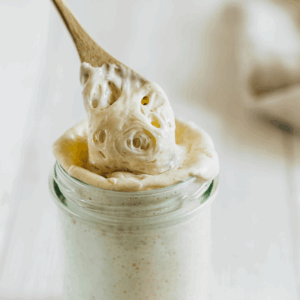
Wild Yeast Sourdough Starter
Equipment
- 1 quart Mason jar
- 1 Mason jar ring
- 1 small fabric scrap or coffee filter
- 1 food scale
Ingredients
- 100 grams all-purpose flour
- 100 grams lukewarm filtered water
Instructions
Crafting the Wild Yeast Sourdough Starter
- Measure 100 grams of flour and place it inside the Mason jar.
- Measure 100 grams of lukewarm filtered water and pour it into the Mason jar.
- Mix the flour and water mixture until well combined with no remaining dry lumps of flour. You now have a sourdough starter ready for fermentation. Leave on the counter out of the way.
- Place the scrap fabric or coffee filter over the Mason jar and screw on the ring. This will help the gas escape during the fermentation process.
Feeding the Wild Yeast Sourdough Starter
- On the following day, discard all but 1/4 of the starter. At this point, it is too early to use for any sourdough discard recipes for any added benefit that sourdough discards offer since it is not mature yet. Just discard it into the garbage or your compost pile. You only need to discard the waste for one week and it is not that much of a loss during the beginning stages of fermentation.
- Next, add 100 grams of flour and 100 grams of lukewarm filtered water and mix it until well combined.
- Place on the scrap fabric or coffee filter and ring and set it back on the counter to continue the fermentation process.
- Repeat this process every day for 7 days.
- After the 7 days of the daily feeding schedule, you can place the sourdough starter in the fridge for a few days until you are ready to feed and use it again. Feed the sourdough starter a few hours before you want to bake sourdough bread to begin the bulk fermentation process.
Summary
I hope I have inspired you to bake your very own bread loaves to enjoy and share with your friends and family.
If you were encouraged by this post, I invite you to check out my FREE Printables Page for fun free printables, planners, and charts.
ENTER MY FREE Printables Page HERE
Here are some more of my bread-making inspiration posts to check out!
The Best Pumpkin Zucchini Bread
The Only Pumpkin Muffin Recipe You’ll Ever Need!
How to Make Banana Split Quick Bread
How to Make S’mores Quick Bread
How to Make Jelly Donut Quick Bread
Lemon Blueberry: How to Make Lemon Blueberry Sourdough Focaccia
How to Make Sourdough Lemon Supreme Quick Bread
Lemon Supreme: How to Make Sourdough Lemon Supreme Quick Bread
How to Make Sourdough Strawberry Cheesecake Muffins
How to Make Chai-Spiced Sourdough Banana Bread
The Best Old Fashioned Sourdough Banana Muffins
How to Make Honey Sourdough Bread
Blueberry: How to Make Lemon Blueberry Sourdough Quick Bread
Pizza: How to Make Pizza Sourdough Focaccia
Carrot Cake: How to Make Carrot Cake Sourdough Focaccia
Easy and Delicious Hershey’s Kisses Sourdough Bread
How to Make Amish Whoopie Pies!
Lazy Cinnamon Rolls: How to Make Easy Cinnamon Rolls the Lazy Way!
Lembas Bread: How to Make Elven Lembas Bread: A Taste of Rivendell
Gnome Bread: How to Make a Sourdough Gnome Bread
How to Make Sourdough Strawberry Cheesecake Muffins
The Best Hoagie Buns Recipe Made From Scratch!
Pumpkin: How to Make Chocolate Chip Pumpkin Bread
More Recipes!
Sweet Potato Bread: How to Make Sweet Potato Bread
Chocolate Chip Cookies: How to Make Chocolate Chip Cookie Bread
Carrot Cake Quick Bread: How to Make Carrot Cake Quick Bread
How to Make Strawberries and Cream Sourdough Bread
How to Make S’mores Sourdough Bread
July 4th Bread: How to Make a Firecracker Marble Bread Braid
Artisan Bread: How to Make Artisan Bread
Challah Bread: How to Make a 6 Braided Challah Bread
Sweet Bread: How to Make Sweet Bread
Blessings,
The Off Grid Barefoot Girl

